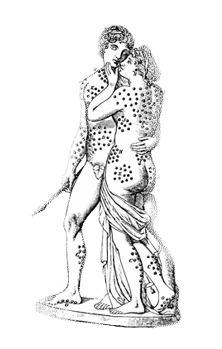
Übersichten
Schmerztherapie
Dtsch med Wochenschr 2006; 131: 506-511
DOI: 10.1055/s-2006-932552
Akupunktur - quo vadis?
Zur aktuellen Diskussion um Wirksamkeit und „Punktspezifität” der Nadeltherapie
Acupuncture: quo vadis?
On the current discussion about efficacy and „point-specifity” of the needle therapy
M. Bäcker1, I. Tao1, G. J. Dobos1
1 Lehrstuhl für Naturheilkunde der Afried Krupp von Bohlen und Halbach-Stiftung an der Universität Duisburg-Essen, Klinik für Innere Medizin V, Knappschaftskrankenhaus, Kliniken Essen Mitte
Zusammenfassung
Mit den Modellprojekten der deutschen Krankenkassen zur Erforschung der Wirksamkeit von Akupunktur sind aufgrund der methodologischen Qualität und Größe der Studien relevante und wissenschaftlich robuste Daten entstanden. Die bisher vorliegenden Ergebnisse aus den randomisierten, kontrollierten Studien „Acupuncture randomised trials (ART)” und „German Acupuncture Trials (GERAC)” zeigen eine Wirksamkeit der Akupunktur in der Behandlung von Migräne, Spannungskopfschmerz, Gonarthrose und chronischen Lumbalgien. Bei den beiden letztgenannten Indikationen scheint die Nadeltherapie sogar der konventionellen Standardtherapie überlegen. Die Daten der ART- und GERAC-Studien deuten aber ferner darauf hin, dass die Relevanz punktspezifischer Effekte der Akupunktur bei einigen Indikationen überschätzt worden ist. Die vorliegende Arbeit diskutiert diese Ergebnisse auf der Basis einer Erläuterung verschiedener Wirkelemente der Akupunkturtherapie. Dabei wird deutlich, dass die aktuellen Daten weder das Postulat einer „Egal-wohin-Akupunktur” rechtfertigen, noch die klassischen Theoreme der Chinesischen Medizin als unumstößlich gelten können. Die Aufgabe zukünftiger Studien wird darin bestehen, genauer herauszuarbeiten, über welche Wirkmechanismen der Therapieeffekt der Akupunktur vermittelt wird. Ferner wird es darum gehen, noch klarer herauszuschälen, bei welchen Indikationen der Ort der Nadlung den entscheidenden Anteil des Gesamttherapieeffektes ausmacht und bei welchen Indikationen eher andere Faktoren wie die Reizparameter der Nadlung oder die Arzt-Patienten-Interaktion im Vordergrund stehen. Die Akupunkturforschung steht noch am Anfang. Es ist daher davon abzuraten, sich durch die aktuellen Daten zu vorschnellen und nicht haltbaren Schlussfolgerungen verleiten zu lassen.
Summary
On the current discussion about efficacy and „point-specifity” of the needle therapy To improve the evidence base for acupuncture in pain treatment the German health insurances initiated the so called „Acupuncture randomised trials (ART)“ and „German Acupuncture Trials“ (GERAC) with a sample size of 300 (ART) and 1000 (GERAC) patients, providing a new dimension in acupuncture research. These studies have yielded data, which indicate that acupuncture is effective in the treatment of migraine, tension type headache, osteoarthritis of the knee and chronic low back pain. For the two latter indications acupuncture showed an even higher therapeutic response rate than conventional standard treatment. In migraine acupuncture showed an effect comparable to pharmacological treatment. The studies moreover indicate that the relevance of point-specific effects may have been overestimated concerning some indications. This article discusses the results of ART and GERAC, based on differentiating the mechanisms of action in acupuncture therapy. It is shown that the current data neither support the postulate of a „no-matter-where acupuncture” nor the irrefutability of the theorems of Chinese Medicine. Future studies will have to determine more precisely the mechanism by which the therapeutic effect of acupuncture is mediated. Furthermore, it will be necessary to find out more clearly in what diseases the location of needling represents the crucial part of the treatment and in what diseases rather different factors, like the intensity of stimulation or the doctor-patient interaction, are more relevant for the therapeutic effect. Research into acupuncture is still at the beginning. For this reason it should be avoided to draw premature and untenable conclusions from the current data.

 Handbuch für die tägliche Praxis
Handbuch für die tägliche Praxis